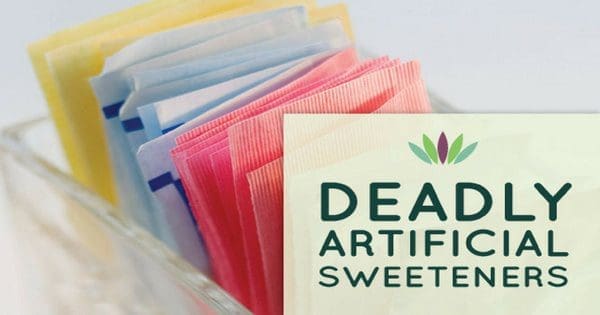Neurotoxins are substances which can interfere with nerve cells by overstimulating them to death or interrupting the electrical activities of nerves and their communication process, altering the normal function of the nervous system.
Common symptoms associated with the consumption of neurotoxins can manifest immediately after ingestion or they may be delayed. Symptoms include: weakness in the extremities; tingling sensations or numbness; memory loss; loss of vision and/or intellect; uncontrollable obsessive and/or compulsive behaviors; delusions; headaches; cognitive and behavioral issues; and sexual dysfunction. Also, people with certain types of disorders can be more vulnerable to these substances.
Research studies have demonstrated that neurotoxins can shorten the life span of nerve cells. In addition, these substances have been associated with the development of brain disorders, peripheral neuropathy as well as neurodegenerative diseases, such as Alzheimer’s, Huntington’s Chorea and Parkinson’s disease.
To make matters worse, the availability of neurotoxins has increased dramatically within the last few decades. A majority of the neurotoxins our bodies absorb are found in the food we eat and the water we drink. Even worse, these can also be found in baby food.
Table of Contents
Neurotoxins In Food
If you have children, it’s important to be aware of the following ten neurotoxins listed below. Because kid’s bodies are still developing, they are often the most vulnerable to the effects of consuming these dangerous substances. The majority of food products that contain neurotoxins are listed on their ingredients list. Processed foods, such as chips and candy, are generally supplied with a load of neurotoxins. It’s best to avoid consuming any food or drink containing the following neurotoxins listed below.
10 Neurotoxins To Avoid
- Aspartame (best known as Equal, AminoSweet, NutraSweet and Spoonful): This substance is very commonly added to sugar-free products, such as sugar-free gums and drinks. Most aspartame is made from the fecal matter of genetically modified bacteria. Research studies have associated the consumption of aspartame to migraines, obesity, kidney failure, blindness, seizures, neurological disorders, mental illness, brain tumors and diabetes.
- Monosodium glutamate (also known as MSG or sodium glutamate): This substance is common in junk food, fast food and most restaurant food, canned food and even in baby food. Independent researchers believe that ingesting MSG, or monosodium glutamate, plays a considerable role in the development of neurodegenerative brain diseases, including Alzheimer’s, Parkinson’s and Huntington’s disease. MSG is frequently disguised on ingredient labels under alternative names like hydrolyzed, or vegetable protein, plant protein extract, sodium caseinate, calcium caseinate, yeast extract, textured protein, TVP, autolyzed yeast, carrageenan, malt extract, malt flavouring, bouillon, seasonings, spices and natural flavoring.
- Sucralose (or Splenda):Â This artificial sweetener alternative is very popular in sugar-free products, especially sugar-free drinks. Sucralose was accidentally discovered during a research focused on creating a new insecticide, which is why some researchers propose that sucralose should be listed in the insecticide category. Sucralose has been identified as a chlorinated compound. When the body breaks down this type of chlorinated compound, it releases toxic chemicals into the bloodstream.
- Aluminum: This type of metal can frequently be found in our drinking water as well as in over-the-counter antacids and vaccines. Aluminum is a difficult substance for the body to absorb, however, citrate or citric acid tremendously increases its absorption. Vaccines are some of the highest factors which contribute to aluminum toxicity, primarily because the aluminum is injected directly into the body.
- Mercury:Â This heavy metal is common in fish products, vaccines and amalgam fillings, also referred to as silver fillings. Mercury can be found in our drinking water as well. Mercury has been identified to be one of the most toxic neurotoxins because it destroys brain tissue.
- Fluoride (sodium fluoride): This substance is very commonly found in drinking water and conventional toothpaste. Fluoride was utilized to exterminate rats before it was introduced into consumer products. The fluoride used for the products we consume is a mixture of a variety of chemicals which can be hazardous to the body. Not to be confused with the natural calcium fluoride, sodium fluoride can be found listed on the warning labels of fluoridated toothpaste products.
- Hydrolyzed vegetable protein:Â This harmful food ingredient is very common in certain junk foods. Hydrolyzed vegetable protein contains high concentrations of the substances glutamate and aspartate. In high levels, glutamate and aspartate can overstimulate nerve cells.
- Calcium caseinate:Â This substance is frequently found in the ingredient list of many protein supplements, energy bars and junk food. Due to its harmful properties, this neurotoxin can damage the brain and cause other neurological issues.
- Sodium caseinate:Â This type of protein is common in dairy products and junk food. It has been associated to the development of gastrointestinal complications and has even been linked to autism.
- Yeast extract:Â A popular food ingredients in many processed foods, such as canned food. It is also toxic to the brain.
Sugar: The Most Common Neurotoxin 
While the above mentioned neurotoxins can be commonly found in higher concentrations on a majority of the foods we eat today, there is one substance that people consume more frequently than all the others: sugar or table sugar. Refined sugar is not as toxic as aspartame but it can be toxic enough to cause considerable harm to the body when it’s consumed on a regular basis.
When you eat a fruit, for instance, you are not just ingesting sugar and water, but also synergistic components, such as mineral activators, enzymes, co-vitamin helpers and fiber. It’s these components that help the body effectively metabolize all the nutrients of the fruit.
Without the help of these synergistic components, sugar cannot be metabolized safely. In fact, certain elements of the sugar are broken down into toxic chemicals instead. When the body metabolizes refined sugar, toxic metabolites are released into the body. These metabolites can then considerably impair the respiration process of the cells.
Other Common Neurotoxins
Other common neurotoxins which can be found in some of the favorite processed foods we consume are chemical food additives, preservatives and sweeteners. Numerous research studies have been conducted on food additives and their toxic, damaging affect on the nerve cells in our body. Brain cells and the peripheral nerves are the most affected by these substances, which can also have a cumulative effect on the body over time.
Monosodium glutamate, or MSG, and artificial sweeteners can gradually cause considerable damage to nerve cells, which may lead to peripheral neuropathy or even worse, Alzheimer’s disease. Yet, these ingredients are found in the foods and beverages we consume daily. The average household has diet beverages, salad dressings, canned soups, condiments, crackers, junk food and many other of these types of foods and drinks. Even baby foods contain many of these neurotoxins.
Whether or not you suffer from any neurological dysfunction, everyone should avoid consuming these harmful chemicals. Over a period of decades, they can cause, not only peripheral neuropathy but, damage to brain cells as well, leading to memory loss, confusion, dementia, including Alzheimer’s and other serious neurological diseases such as Parkinsons.
For more information, please feel free to ask Dr. Jimenez or contact us at 915-850-0900 . 
By Dr. Alex Jimenez
Additional Topics: Neck Pain and Auto Injury
Neck pain is characterized as the most prevalent symptom after being involved in an automobile accident. During an auto collision, the body is exposed to a sheer amount of force due to the high speed impact, causing the head and neck to jolt abruptly back-and-forth as the rest of the body remains in place. This often results in the damage or injury of the cervical spine and its surrounding tissues, leading to neck pain and other common symptoms associated with whiplash-related disorders.
.video-containerposition: relative; padding-bottom: 63%; padding-top: 35px; height: 0; overflow: hidden;.video-container iframeposition: absolute; top:0; left: 0; width: 100%; height: 100%; border: none; max-width:100%!important;
TRENDING TOPIC: EXTRA EXTRA: New PUSH 24/7Â®ï¸ Fitness Center
Post Disclaimer
Professional Scope of Practice *
The information herein on "Common Neurotoxins and their Effects on the Body" is not intended to replace a one-on-one relationship with a qualified health care professional or licensed physician and is not medical advice. We encourage you to make healthcare decisions based on your research and partnership with a qualified healthcare professional.
Blog Information & Scope Discussions
Welcome to El Paso's Chiropractic Scientist wellness blog, where Dr. Alex Jimenez, DC, FNP-C, a board-certified Family Practice Nurse Practitioner (FNP-C) and Chiropractor (DC), presents insights on how our team is dedicated to holistic healing and personalized care. Our practice aligns with evidence-based treatment protocols inspired by integrative medicine principles, similar to those found on dralexjimenez.com, focusing on restoring health naturally for patients of all ages.
Our areas of chiropractic practice include Wellness & Nutrition, Chronic Pain, Personal Injury, Auto Accident Care, Work Injuries, Back Injury, Low Back Pain, Neck Pain, Migraine Headaches, Sports Injuries, Severe Sciatica, Scoliosis, Complex Herniated Discs, Fibromyalgia, Chronic Pain, Complex Injuries, Stress Management, Functional Medicine Treatments, and in-scope care protocols.
Our information scope is limited to chiropractic, musculoskeletal, physical medicine, wellness, contributing etiological viscerosomatic disturbances within clinical presentations, associated somato-visceral reflex clinical dynamics, subluxation complexes, sensitive health issues, and functional medicine articles, topics, and discussions.
We provide and present clinical collaboration with specialists from various disciplines. Each specialist is governed by their professional scope of practice and their jurisdiction of licensure. We use functional health & wellness protocols to treat and support care for the injuries or disorders of the musculoskeletal system.
Our videos, posts, topics, subjects, and insights cover clinical matters, issues, and topics that relate to and directly or indirectly support our clinical scope of practice.*
Our office has reasonably attempted to provide supportive citations and has identified the relevant research studies or studies supporting our posts. We provide copies of supporting research studies available to regulatory boards and the public upon request.
We understand that we cover matters that require an additional explanation of how they may assist in a particular care plan or treatment protocol; therefore, to discuss the subject matter above further, please feel free to ask Dr. Alex Jimenez, DC, APRN, FNP-BC, or contact us at 915-850-0900.
We are here to help you and your family.
Blessings
Dr. Alex Jimenez DC, MSACP, APRN, FNP-BC*, CCST, IFMCP, CFMP, ATN
email: coach@elpasofunctionalmedicine.com
Licensed as a Doctor of Chiropractic (DC) in Texas & New Mexico*
Texas DC License # TX5807
New Mexico DC License # NM-DC2182
Licensed as a Registered Nurse (RN*) in Texas & Multistate
Texas RN License # 1191402
ANCC FNP-BC: Board Certified Nurse Practitioner*
Compact Status: Multi-State License: Authorized to Practice in 40 States*
Graduate with Honors: ICHS: MSN-FNP (Family Nurse Practitioner Program)
Degree Granted. Master's in Family Practice MSN Diploma (Cum Laude)
Dr. Alex Jimenez, DC, APRN, FNP-BC*, CFMP, IFMCP, ATN, CCST
My Digital Business Card








 Again, We Welcome You.
Again, We Welcome You.
Comments are closed.